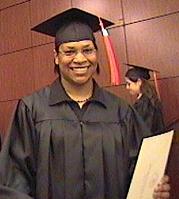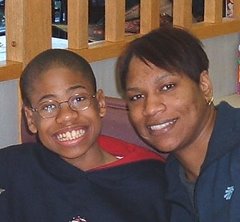Message from ACHAMP:
ALERT- AUTISM RECOVERY STORY ON NATIONAL TV
This Sunday evening, June 4th 2006 (7 PM - 9 PM est),
Dateline NBC has a 12 minute segment featuring Baxter Berle and Joshua Shoemaker, two children on the road to recovery from autism. The segment also includes information about thetreatment research of Dr. James Adams. http://www.scnm.edu/breakingNews.php
Dr. Adams told people at the Autism One conference he saw the piece and thinksit is fair.
This past year Dateline NBC reviewed SCNM’s chelation research study with autistic children, conducted exclusively by the Southwest College Research Institute at SCNM. It has been confirmed that the piece will air on Dateline NBC on the evening of June 4th. Please check your local listings for the correct time.
Those involved have been informed by the segment producer that the NBCexecutives REALLY listen to the letters and emails. After viewing, PLEASECOMMENT so they will consider airing future segments on this important topic at dateline@msnbc.com.
http://www.msnbc.msn.com/id/13104961/MSNBC.com
Inside Dateline: The unorthodox practice of chelationProducer: Could childhood vaccines have any link to autism?
• June 2, 2006 4:33 p.m. ET
The unorthodox practice called chelation (Alexandra Gleysteen, Dateline producer)
I may be a network news producer, but first and foremost, I’m a mother. I only have one child, a boy born in 1992. That’s just around the time the autism rates began to soar, especially here in California where I live. Some say the new big numbers—(one in 175 American children could be diagnosed this year compared to the 1980’s when it was 1 in 100,000 kids)--simply reflect the fact that more children are labeled autistic today because we recognize the condition. But others argue there’s just more autism around and that nobody knows why. All I know is that back when my son was born, people started talking about this mysterious condition called autism. And with boys being almost four times as likely to be diagnosed as girls, I began to pay attention.
So why do a story 13 years later on an obscure and unorthodox practice called “chelation”? Maybe it’s because a lot of parents of autistic children have reported that removing heavy metals from their children’s systems made their boy or girl’s life a little bit better. Some parents claim their daughter’s language improved or that they finally toilet trained their son, or perhaps it was just a sense that “the fog” isolating their child from the “real” world lifted a little bit. We heard even more dramatic claims that chelation had helped “cure” children of autism. Now, it may or may not be true, but you can understand why parents would want to believe something good could happen for their children. We learned early on in this story that the parents of autistic children rarely give up.
Parents like Jim Adams, a professor of chemistry at Arizona State University. I think that if I were an autistic child, he’d be the kind of father I’d want to have. He sees beyond convention, but uses reason, and he is totally devoted to children with autism. In today’s vernacular, he’s got their back.
When Jim and his wife, Marie, learned that their daughter Kim was autistic, their reaction was pretty normal. They grieved when doctors predicted a depressing future for their two year old, one without language, independence, friendship or hope. But they quickly rallied and became incredible advocates and activists for their autistic child.
One of the first things Jim did when he got the news about Kim was to trade in the study of materials engineering for the study of heavy metals and brain chemistry. Today he’s considered an expert on how vitamins and minerals interact with the brain, especially autistic brains. Marie and Jim have changed almost every other aspect of everyday life as well: from how they schedule their days (by putting Kim’s endless needs for tutoring, therapy and treatment first), to how they clean their house (no chemicals that could upset Kim’s sensitive system), to how they eat (lots of protein and no wheat for Kim.)
Being around them while shooting this story, you can tell that they don’t consider these changes in lifestyle an obligation. It’s just another expression of their love for a girl doctors wrote off years ago. And by the way, they’ve proven those doctors wrong. While Kim’s future is still uncertain, the fact is that at twelve, she still lives at home, communicates with language, plays games with her older sister, rides a bus to school and hugs you endlessly.
We met Jim and his family because of his latest endeavor. Along with a doctor named Matt Boral from the Southwest School of Naturopathic Medicine, Jim is on a quest. He wants to help answer a really explosive issue in the world of autism research: Do heavy metals, particularly mercury, play any part in causing autism—and/or does removing mercury from the body improve an autistic child’s health? Mercury is a known neuro-toxin and is found all around us, especially in pollution. But there is enormous controversy surrounding one particular source: childhood vaccines. Until it began being phased out of infant vaccines a few years ago, most childhood vaccines contained a preservative called thimerasol, which is primarily mercury. Many parents believe that it was routine vaccinations that helped precipitate their children’s autism.
That is not the position of government agencies, including the CDC and NIH, nor major scientific organizations, like the American Academy of Pediatrics. They maintain science has clearly established that there is no link between mercury from vaccines and autism. But somehow the question never dies, in part because activist parents question the government’s original research into the matter.
Jim Adams knows he’s stepping into what so far has proven to be a political and medical minefield, but as a scientist he says he’s just forging ahead. He’s conducting the first double blind, placebo controlled study on chelation, in which he’ll follow 80 autistic children to see if their health and behavior improve once they’ve rid their bodies of heavy metals, including mercury. If chelation helps them, the study will help chip away at the mainstream scientific view that mercury isn’t related to autism. If chelation doesn’t have any impact on them, Jim figures he’s helped put the issue to rest. But in either case, he says he’ll feel good knowing he’s advanced our understanding of autism.
Whether you are a parent of an autistic child, or just a producer reporting on one, you can’t help but admire people who’ve put aside anger or self-pity, and instead moved on to lead lives of curiosity, purpose and dedication. Which perhaps goes back to the original question about why 13 years later, I find myself doing a story on chelation. Why wouldn’t I? We all want the answers.
Dateline will follow up to see what happens as the study concludes sometime in the winter of 2006.
Our report on Jim Adams' quest and chelation airs Dateline Sunday, 7 p.m.
URL: http://www.msnbc.msn.com/id/13104961/
For information, resources and strategies on autism visit:
www.child-autism-parent-cafe.com
www.AutismConcepts.com
Forget what you haven't heard… Family site shares news, resources, announcements and free or low-cost ways to help us manage day-to-day living with autism.
Crystal Brown

About Me

- Crystal
- AutismConcepts.com and Child-Autism-Parent-Cafe.com share a large collection of useful autism information, resources, and how-to articles written by authors who are touched by autism, offering practical solutions to families. Particularly minority and underserved families and caregivers who may not know what to do or where to go for help.
MJ And Me

Blog Archive
-
▼
2006
(213)
-
▼
June
(24)
- Autism Medical Insurance Discussion Group Forms
- Kaiser opens center for autistic children
- VESID - Changes to Part 80 Regulations (NYS)
- Key To Early Diagnosis Of Autism May Be In The Pla...
- Study: Autistic epileptiform regression
- School can be cruel for kids with autism
- Listen to Aurthor David Kirby Radio Interview On Line
- Are Digestive Enzymes Safe for Children?
- NY Report Denounces Shock Use At School
- New law calls for speech therapy for autistic chil...
- Doctors want to screen out embryos with autism
- Study: Autism in children can be detected as early...
- Clinic is all about 'talking, talking'
- Study: Autism has higher occurrence in polluted areas
- Autism Health Insurance Rights Bill Passes in New ...
- Study: Gene interaction raises autism risk in blac...
- Study: Family Support Service in the United States
- Researcher studies connection between autism, vacc...
- Autism Study on Promising Supplement Approved
- Free Autism Mini-Conference
- Study Raises New Concerns About Mercury in Tuna
- ALERT- AUTISM RECOVERY STORY ON NATIONAL TV
- State: Racial disparities in Lakewood special ed p...
- Please nominate us for a BlackWeb Award!
-
▼
June
(24)